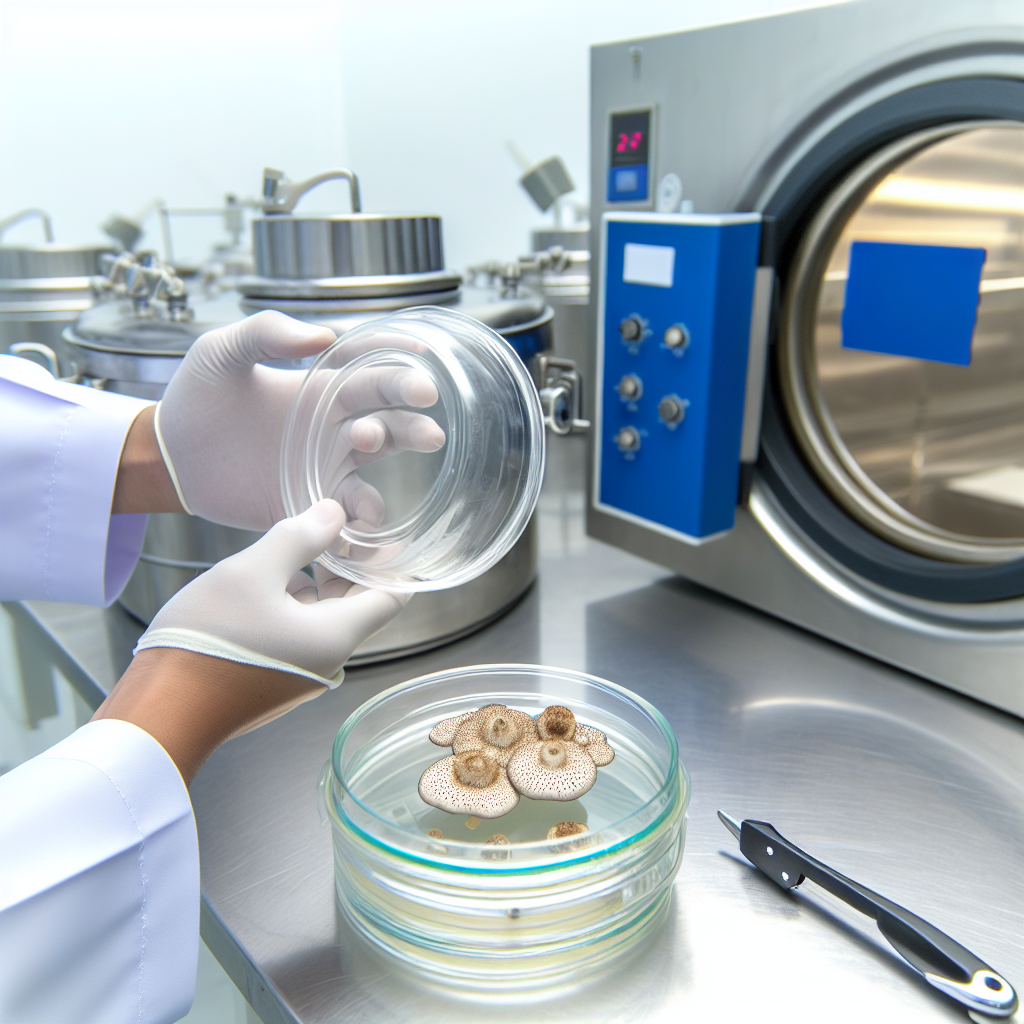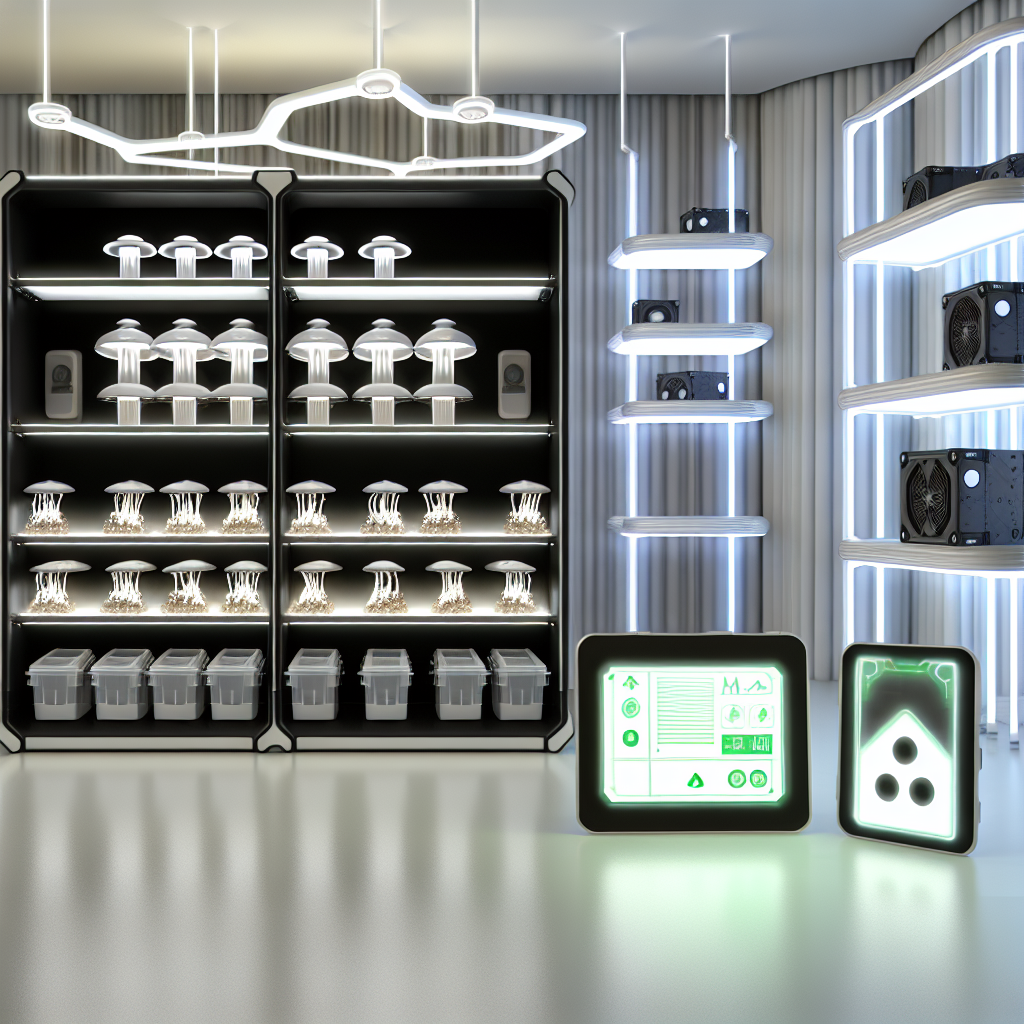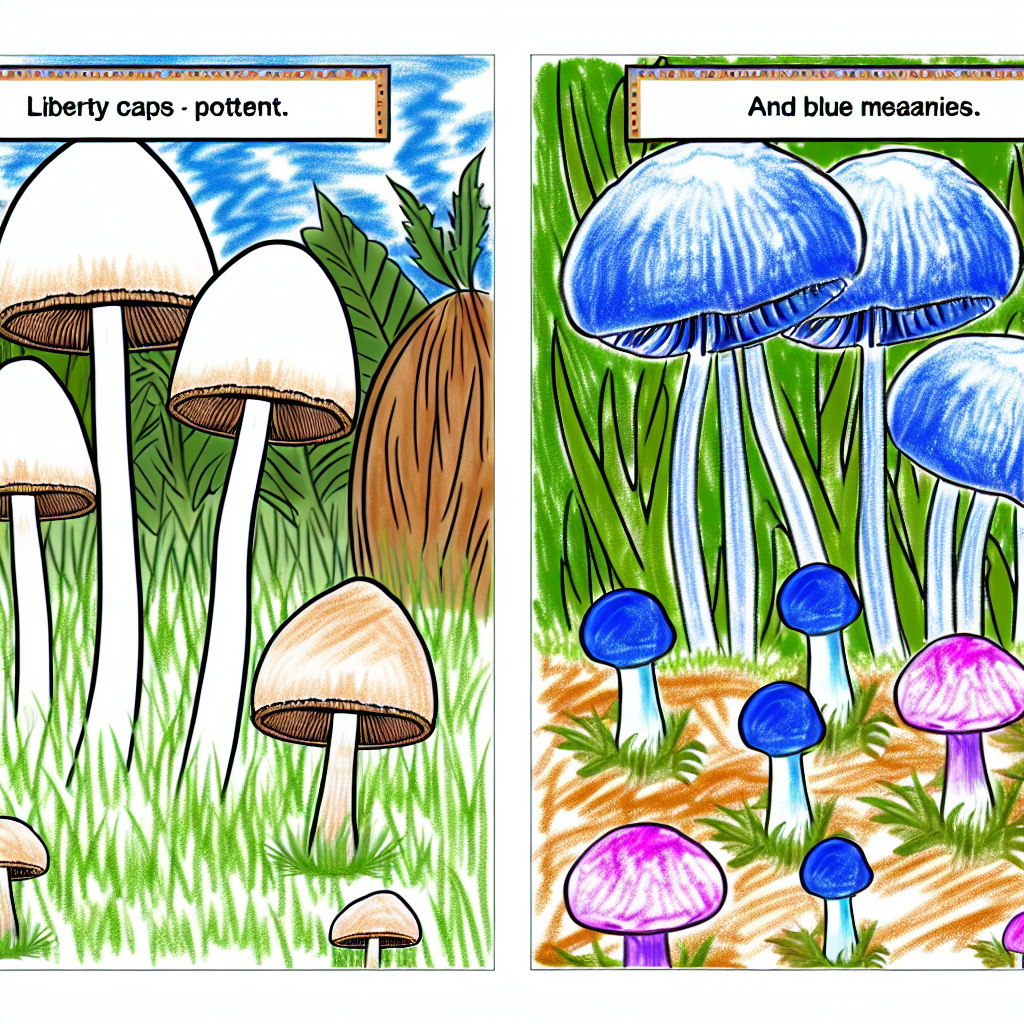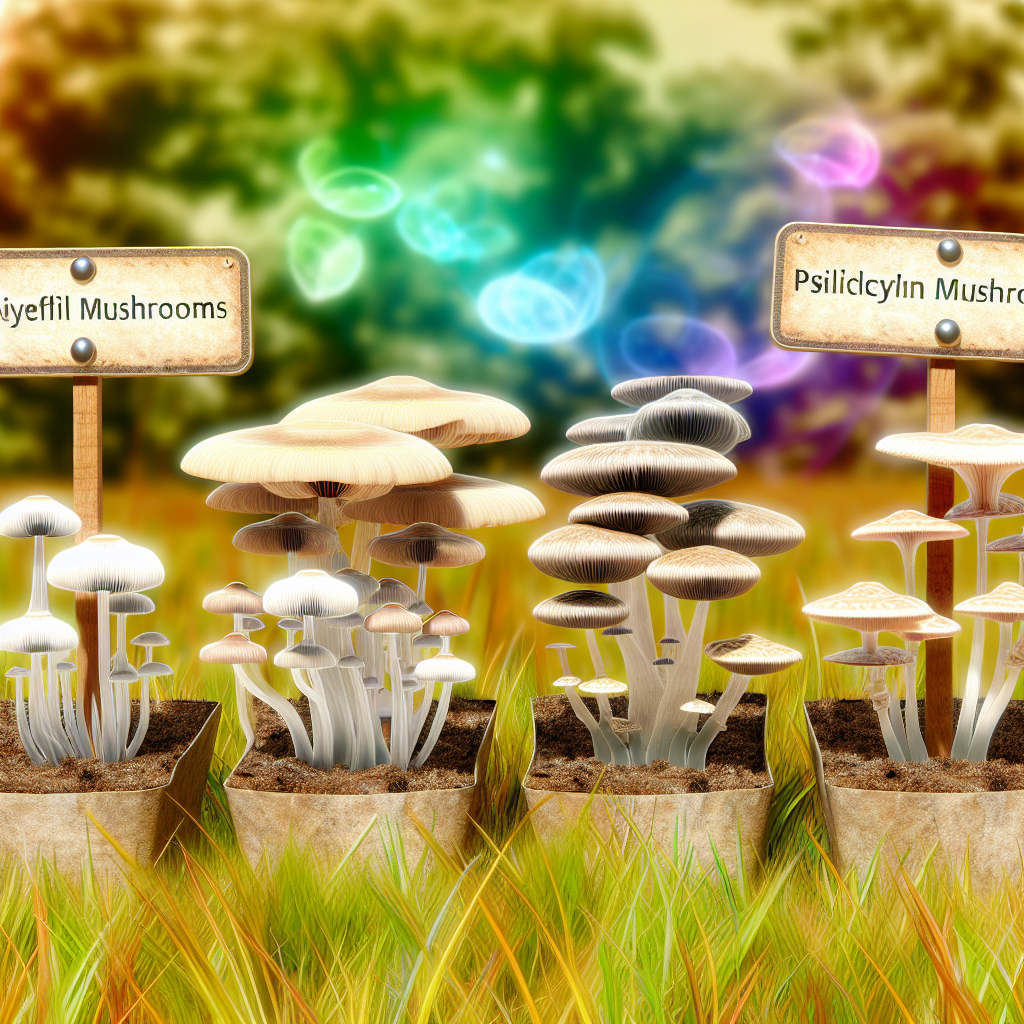Advanced Sterilization Techniques for High-Yield Psilocybin Cultivation
Psilocybin-containing mushrooms, particularly species in the genus *Psilocybe*, are rapidly gaining traction in both scientific and holistic health communities for their promising therapeutic benefits, such as reducing depression, anxiety, and addiction symptoms. As new clinical research emphasizes the benefits of psilocybin-assisted therapy, there is a growing demand among legal cultivators, researchers, and even microdosing enthusiasts to ensure the highest quality and potency of their mushroom yields.
Cultivating psilocybin mushrooms is both an art and a science, and one critical factor that can make or break the process is sterilization. The integrity of any psilocybin cultivation project relies heavily on the prevention of contamination from mold, bacteria, and competing fungi. Contaminants not only reduce yields and compromise the purity of the final product, but they can also pose serious health risks if consumed. That’s why the sterilization process is paramount—and advanced techniques beyond basic pasteurization or boiling can lead to significantly higher yields and cleaner, safer products.
In the pursuit of high-yield psilocybin cultivation, modern sterilization technologies are being adopted from pharmaceutical, microbiology, and food science industries. Whether you are a home-grower operating in a legal jurisdiction or a professional research team working under government-authorized licenses, understanding advanced sterilization solutions like autoclaving, laminar airflow hoods, gas sterilization, and high-efficiency particulate air (HEPA) filtration systems can support superior results.
This article explores these sophisticated sterilization methods and delves into current medical and scientific studies that support their use in psilocybin mushroom cultivation. Whether cultivating for clinical use, microdosing regimens, or controlled therapeutic environments, these advanced techniques help to maximize output, ensure sample purity, and preserve the potency of therapeutic psilocybin.
Medical and Professional Validation of Sterilization in Psilocybin Cultivation
Multiple peer-reviewed studies and professional manuals emphasize that contamination control is a central concern in the cultivation of medicinal mushrooms. According to a 2020 study published in the journal *Fungal Biology Reviews*, the quality and yield of mushroom crops are highly influenced by substrate sterilization, especially in psilocybin mushroom strains that are more susceptible to bacterial invasion due to their nutrient-dense substrates ([Fungal Biology Reviews](https://www.sciencedirect.com/science/article/pii/S1749461320300376)).
Traditional sterilization methods typically involve boiling or pressure cooking, but modern techniques offer significantly higher control over contaminants. For example:
– **Autoclaving**: This method uses sustained high-pressure steam at 121°C for 15–30 minutes. Common in professional-grade labs, autoclaving is associated with near-total contaminant elimination. The U.S. Food and Drug Administration (FDA) and the Centers for Disease Control and Prevention (CDC) strongly recommend autoclaving in any lab setting working with fungal spores to ensure biosafety ([CDC Guidelines](https://www.cdc.gov/labs/BMBL.html)).
– **Laminar Flow Hoods with HEPA Filters**: These are essential for a sterile working environment. Laminar flow hoods push filtered air horizontally across lab surfaces to block airborne contaminants. The HEPA filters in these systems remove 99.97% of particles larger than 0.3 microns—including bacteria and fungal spores. According to the *Journal of Applied Microbiology*, this setup leads to a 200% increase in successful inoculations compared to non-laminar environments ([Journal of Applied Microbiology](https://sfamjournals.onlinelibrary.wiley.com/journal/13652672)).
– **Gas Sterilization**: Utilizing ethylene oxide or hydrogen peroxide gas, this technique sterilizes growth chambers, utensils, and packaging materials effectively. Though cost-intensive and typically used in commercial or institutional settings, emerging consumer-grade products are making this method more accessible to smaller cultivators.
– **UV-C Light Sterilization**: Ultraviolet-C (UV-C) radiation is a non-invasive, chemical-free method shown to significantly reduce microbial load across grow spaces. Research published in the *International Journal of Medicinal Mushrooms* confirms this method’s efficacy during multiple cultivation phases including pre-inoculation ([International Journal of Medicinal Mushrooms](https://www.begellhouse.com/journals/medicinal-mushrooms.html)).
Why Sterility Is Essential in Clinical and Therapeutic Psilocybin Production
For legal cultivators working on clinical psilocybin trials, such as those supported by Johns Hopkins University and Imperial College London, sterile cultivation environments are non-negotiable. These research programs require pharmaceutical-grade psilocybin mushrooms that meet rigorous FDA Investigational New Drug (IND) standards, which include strict guidelines for contamination control and documentation.
Sterile techniques ensure that psilocybin products are:
– Free from pathogenic molds and bacteria
– Consistent in potency and composition
– Safe for human therapeutic consumption
– Compliant with regulatory and research-grade standards
Uncontrolled contamination can result in entire crop failures, spoiled substrates, and errant dosing—potentially derailing therapeutic outcomes or research fidelity. Therefore, clinical and professional cultivators are increasingly embracing pharmaceutical-level sterilization workflows to mitigate these risks.
Maximizing Potency and Yield Through Advanced Sterilization
Beyond safety, advanced sterilization boosts vital production metrics including colonization rate, fruiting efficiency, and overall yield. With reduced contamination comes a higher ratio of successful substrate colonization and fruiting body development—critical for getting the most from each cultivation cycle.
Key benefits of adopting high-grade sterilization methods include:
– ✅ Faster colonization times
– ✅ Improved substrate utilization
– ✅ Higher quality control of fruiting bodies
– ✅ More consistent psilocybin and psilocin concentrations
– ✅ Lower resource loss due to batch failures
Whether you’re microdosing, facilitating licensed therapy sessions, or producing for clinical trials, every gram of psilocybin matters. Sterilization is no longer just a precaution—it’s a cornerstone of yield optimization and therapeutic fidelity.
Conclusion: Clean Techniques for Clean Medicine
In the rapidly evolving landscape of psilocybin research and cultivation, advanced sterilization techniques stand out as a critical component of high-yield, medical-grade production. By integrating methods such as autoclaving, laminar airflow, HEPA filtration, gas, and UV sterilization, cultivators can significantly improve not only their yields but also the safety and efficacy of their psilocybin products.
As the therapeutic benefits of psilocybin continue to unfold, adopting these scientifically validated sterilization techniques ensures that this powerful natural medicine can be cultivated safely, responsibly, and to its fullest potential.
References
– [Fungal Biology Reviews](https://www.sciencedirect.com/science/article/pii/S1749461320300376)
– [CDC Biosafety Guidelines](https://www.cdc.gov/labs/BMBL.html)
– [Journal of Applied Microbiology](https://sfamjournals.onlinelibrary.wiley.com/journal/13652672)
– [International Journal of Medicinal Mushrooms](https://www.begellhouse.com/journals/medicinal-mushrooms.html)
– [Johns Hopkins Center for Psychedelic Research](https://hopkinspsychedelic.org)
Concise Summary:
This article explores advanced sterilization techniques for high-yield psilocybin mushroom cultivation, including autoclaving, laminar airflow hoods, gas sterilization, and UV-C light. These methods are validated by medical and scientific research to ensure the safety, potency, and consistency of psilocybin products for therapeutic use, clinical trials, and microdosing. By adopting these sophisticated sterilization workflows, cultivators can maximize yields, prevent contamination, and deliver the highest quality psilocybin medicine.

Dominic E. is a passionate filmmaker navigating the exciting intersection of art and science. By day, he delves into the complexities of the human body as a full-time medical writer, meticulously translating intricate medical concepts into accessible and engaging narratives. By night, he explores the boundless realm of cinematic storytelling, crafting narratives that evoke emotion and challenge perspectives. Film Student and Full-time Medical Writer for ContentVendor.com




